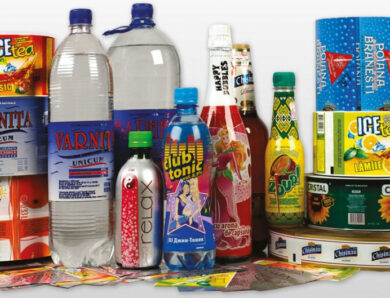Plastic painting: specifics, technology, how and what to paint?
Car plastic often requires painting, be it an element of the salon, bumper or external weights. There are many reasons for this. It happens, that car manufacturer, even premium class, does not pay due attention to the aesthetics of plastic interior details, insufficient coverage (or not covering at all) their varnish. But most often the reason for the loss of their appearance are flaws in operation. To restore aesthetics, such a detail needs to be painted.
Features of painting the interior of the car
Painting car interior parts made of plastic only at first glance seems a simple task. There are some nuances in this process, you need to know, to get a quality and beautiful coating and get rid of defects.
Painting plastic parts in the car requires careful preparation
Plastic painting is a multi-stage process, which has the following features:
- primarily, it is necessary to dismantle the necessary detail, that without breaking off latches and without losing its small parts;
- before painting the plastic elements of the interior they must be degreased and cleaned from the remnants of factory varnish and paint;
- tinting of paints with selection of the necessary shade is made not less than an hour before their drawing;
- for the best adhesion the first coat and painting of details is carried out in layers with full drying of the previous layer;
- when using polyurethane water-based paint, it is necessary to enter the hardener.
Some plastics, used to make interior elements of the car interior, it is possible not to ground. This is determined by a simple test. Need a piece of such material, cleaned of paint, put in water. If it sinks - you can do without a primer, and when it stays afloat, be sure to apply the primer.
What to paint salon plastic, painting plastic from a spray can
Warning! Various tools can be used when painting plastic parts of the car interior, including a brush, pneumatic spray gun or spray can with paint. The main thing, that the paint was applied in a thin layer, not thicker 60 micron. A thicker layer of LFM will take longer to dry, and the quality of painting can be significantly impaired.
When painting, aerosol paint for plastic is best, some details are more convenient to paint with a brush
The following types of LFM are used to perform painting works:
- special plastic primer, which is called a primer or adhesive primer - its purpose is to ensure reliable adhesion of paint to plastic;
- filler soil or secondary, acrylic primer;
- paint;
- colorless acrylic varnish.
What is Xeralik: car painting options
Most often, the painting of plastic products is performed by the following types of paints:
- acrylic;
- polyurethane enamels;
- powder paints (used for thermoplastics - polyamide, polyethylene, polypropylene and polyurethane);
- polymer LFM type liquid plastic;
- nitroenamel in an aerosol can.
When using nitroenamel spray can for painting car interior elements, it is necessary to take into account the aggressiveness of the solvent included in it.. Therefore, the paint should be applied in a thin layer, pre-treated and primed the surface.
Painting plastic with your own hands can be done with a brush or spray can
Chrome plastic painting
Recently, it has become fashionable among car owners to repaint the plastic elements of the cabin under the chrome. Basically, this painting is not very different from the usual. This is especially true of the surface preparation process. There are two methods of "chrome plating". The first of them involves the implementation of such successive stages:
- applying black paint;
- polishing the painted product after drying to a mirror state;
- wiping the polished surface with a special alcohol;
- heating the painted part with a construction blow dryer;
- chromium spraying;
- polishing after drying.
Importantly! Chrome coating is performed with a spray gun with a small amount of paint, which is supplied under high pressure.
The second method involves first the usual varnish coating. After 15 minutes of drying is necessary:
- perform polishing;
- apply with a spray gun a few thin layers of chrome;
- carefully dry the part in a special chamber, at a temperature of about 600 C.
Сьогодні існують також різні способи фарбування автопластіка під дерево і метал, алюміній і золото, крокодилячу і зміїну шкіру.
Фарбування пластикових деталей автомобіля своїми руками
Щоб якісно провести фарбування пластмасових деталей автомобільного салону, потрібно дотримуватися певного алгоритму дій, і перш за все, правильно виконати підготовку поверхні під фарбування. This is necessary:
- Зняти деталь і, перш ніж знежирити, ретельно промити її, оглянувши на наявність тріщин і інших дефектів.
- За допомогою розчинника або уайт-спіриту прибрати жирні і масляні плями, а також інші забруднення.
- Обробити поверхню антистатиком, щоб статичну електрику не притягають пил.
- Якщо є дефекти, потрібно усунути їх спеціальної шпаклівкою для пластмаси, і дати поверхні час на просушку.
- Затерти всі нерівності наждачним папером. При цьому шліфувати потрібно «по мокрому», застосовуючи абразив Р300 або Р400.
- Rinse, ретельно висушити і знову знежирити виріб.
Painting calipers with your own handsФарбування пластикових деталей автомобіля своїми руками — справа для терплячих, необхідно суворо дотримуватися технології
- Нанести тонкий шар адгезійного ґрунту і 1-2 шари акрилової грунтовки з інтервалом 10-15 хвилин на висихання кожного шару. При бажанні отримати структурну поверхню, в останньому шарі використовується текстурная грунтовка.
- Після висихання грунту зачистити ґрунтовку абразивної шкіркою Р400-Р500.
Поверхня повністю готова до фарбування. At home, якщо немає фарбопульта, можна скористатися балончиком з фарбою у вигляді аерозолі або звичайної пензликом. Фарбу наносять в 2-3 шари з інтервалом 15-25 minutes, і дають деталі добре просохнути. Тільки після цього можна покрити поверхню лаком і відполірувати спеціальною пастою.




